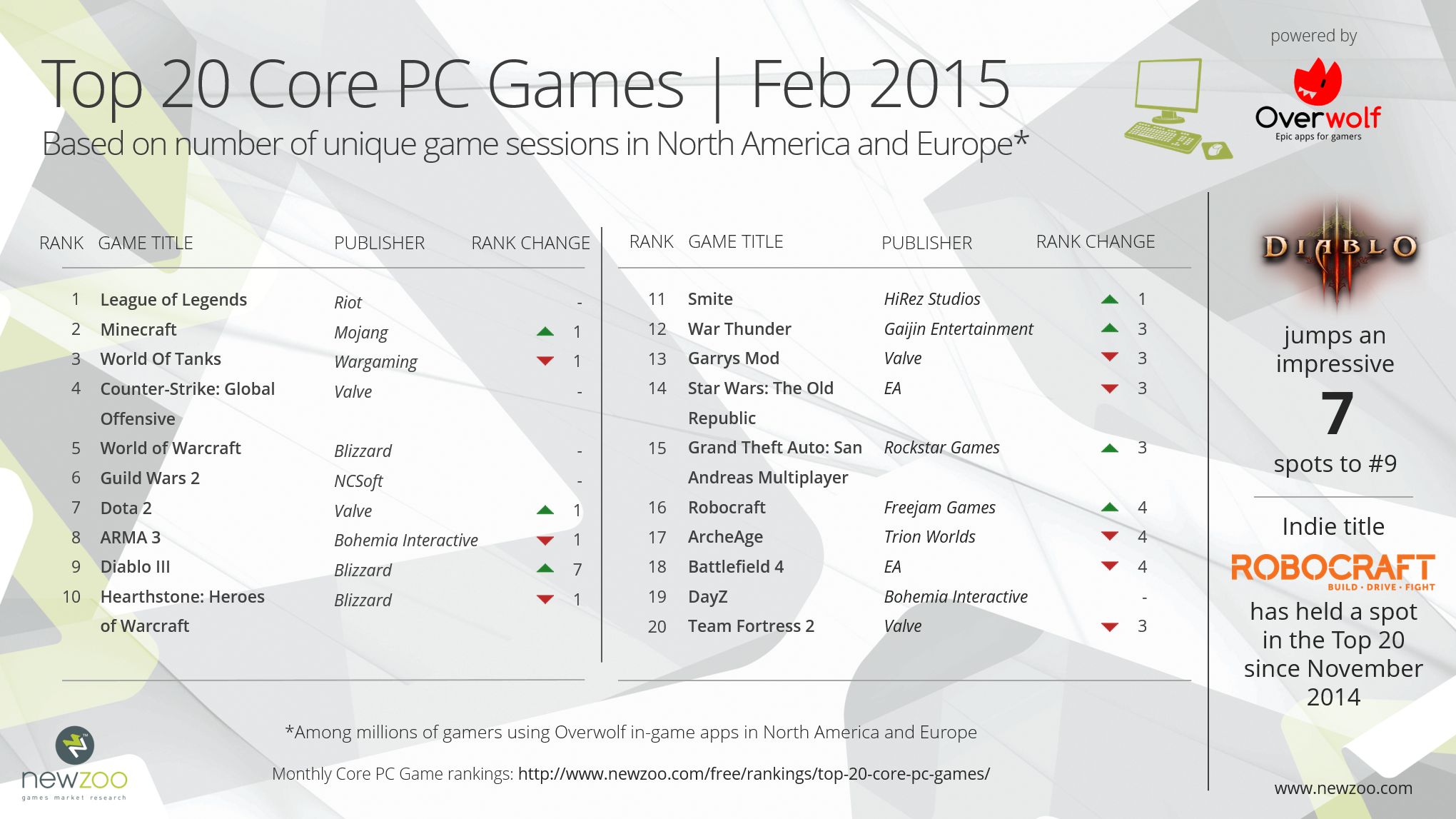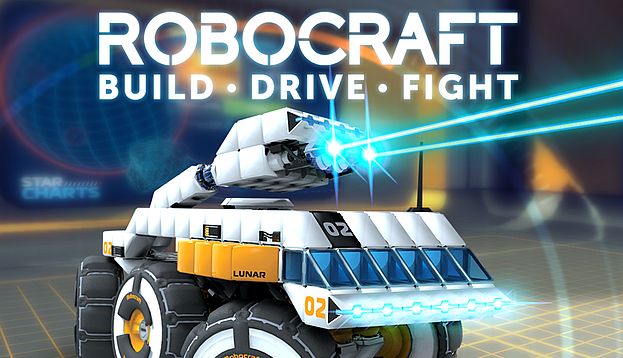For the first time in five months, the Top 3 of the Top 20 core PC Game Rankings have been disrupted: Minecraft (Mojang) has moved up a place to Rank 2 with Wargaming’s World of Tanks falling to Rank 3. Riot’s League of Legends remains at Rank 1, having dominated in this position since we began publishing the Rankings in April 2014.

Content Drives Session Times
The biggest change in the February Rankings was the phenomenal rise of Blizzard’s Diablo III, climbing an impressive seven spots to Rank 9. This is doubly surprising since the title has not been in the Top 10 for more than three months. A major reason for the dramatic increase in unique sessions lies in the release of Diablo III’s Season 2 on February 13th. With a host of new items, challenges and ranked rewards, players have been returning in ever growing numbers. Blizzard’s other title Hearthstone: Heroes of Warcraft dropped one place to Rank 10, the first decline in two months following the release of the ‘Goblins vs. Gnomes’ expansion in December 2014. With the next content patch ‘Blackrock Mountain’ set for imminent release in April 2015, we may see a slight increase in session numbers as players return to accrue in-game currency to purchase the expansion on release day.
An Indie Anomaly
We first pointed out Freejam Game’s indie title Robocraft back in November 2014. A unique mix of Minecraft mechanics, sci-fi overtones and plenty of guns, Robocraft is a F2P title where players design and deploy robots to competitively battle each other out. In December 2014, the game won ‘Indie Game of the Year’ on Indie DB, climbing the ranks driven by media coverage and positive reviews on Steam. Although it dropped six places in January 2015, the title has moved up four spots to Rank 16, spurred on by the release of its ‘Dawn of the Megabots’ expansion on the February 18th. Though it’s not surprising to see an indie title in the Core PC Game Rankings, Robocraft‘s tenacity in the Top 20 these past four months is truly impressive. Freejam’s success is not only due to the growing attraction to voxel-based creative titles with competitive mechanics, but also the reduced barriers to entry offered by Robocraft‘s F2P monetization model and Steam accessibility.
Zero Point MMOs
Overall, February was not an impressive month for big MMOs. Blizzard’s World of Warcraft and NCSoft’s Guild Wars 2 were stable at Rank 5 and Rank 6 respectively. Although Gaijin Entertainment’s War Thunder moved up two places to Rank 12 (with new content having been introduced on February 12th), February was not great for the remaining MMOs in the Rankings. EA’s Star Wars: The Old Republic fell three spots to Rank 14, due perhaps to the diminishing returns on the expansion ‘Shadow of Revan’ released in December. The release also divided the game’s highly vocal community, causing strife in some community segments due to the large number of bugs affecting game play.
Trion World’s ArcheAge had similar problems, falling four places to Rank 17. The once highly popular MMO has been afflicted with a large number of bots and hackers, causing a large outcry and community backlash. The problem was exacerbated by Trion World’s inclusion of HackShield, a program designed to stop cheating in games that has a negative reputation in the MMO community. The success or failure of online titles are very often decided by the online community (especially when potential players research a title before playing) and it remains to be seen if ArcheAge can move past its current mixed reputation.
MOBA Mechanics
Of the three MOBAs in the Top 20 Core PC Rankings, two are in the Top 10: Riot’s League of Legends and Valve’s DotA 2. HiRez Studio’s Smite, despite moving up one place in February to Rank 11, is not. The only month Smite moved into the Top 10 was December 2014, driven by the massive interest in its World Championship and registration for its Xbox release. Smite is, in some ways, a vastly different game than DotA 2 and LoL. For one thing, Smite trades the traditional MOBA ‘top down’ perspective for a third person view associated more with first person shooters. Core mechanics like ‘last hit‘ are absent from Smite and the punishment/reward for individual player performance is less severe when compared to the other two games. MOBAs are built on the core idea of competition: LoL and DotA 2, with mechanics focused on rewarding or heavily penalizing individual player performance, have generated higher session times than Smite since the Ranking began. The fact that both titles are top down versus Smite‘s third person perspective might play a significant role too. Blizzard’s MOBA Heroes of the Storm (currently in Beta) has been criticized by some communities for the lack of penalization for individual performance, emphasizing team effort instead. It remains to be seen over the coming months if session numbers remain high for traditional, highly competitive MOBAs or if newer, more casual titles can gain serious session time traction.Â
Find more information on the eSports market and audience here.

